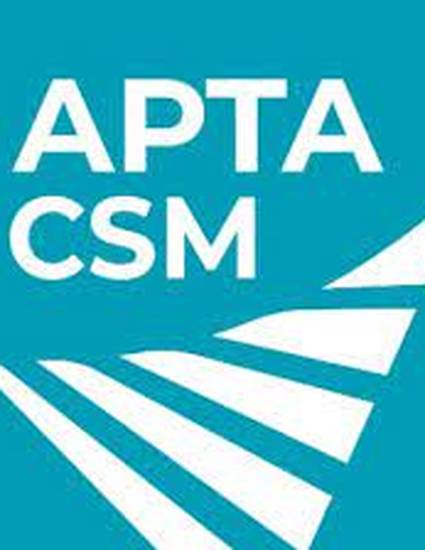
Presentation
No Pain No Gain: Student Performance over Time on the Revised Neurophysiology of Pain Questionnaire
American Physical Therapy Association Combined Sections Meeting
(2021)
Abstract
Purpose/Hypothesis:
Core competencies in pain management for pre-licensure health professional education have been established. The purpose of this study was to assess the effect of 10-hours of pain neurophysiology education (PNE) on physical therapy students understanding of pain and retention of key concepts.
Number of Subjects:
Thirty-three second-year physical therapy students.
Materials and Methods:
Ten hours of PNE was embedded in a clinical neuroscience course which included a 2-hour lab assignment called “The Matrix”. The content was guided by key principles recommended by the International Association for the study of Pain (IASP). The lab assignment included case studies that required students to apply the didactic material, summarize it on whiteboards and present it to the class. The Revised Neurophysiology of Pain Questionnaire (RNPQ) was used given its ability to assess an individual’s conceptualization of biological pain mechanisms in addition to having acceptable psychometric properties. The RNPQ comprises 13 true, false, or undecided items related to the neurophysiology of pain. A correct response scores one point, whereas incorrect or undecided responses score zero points. Students completed the RNPQ across 3-time points: 1) before delivery of course material, 2) following delivery of course material; and 3) 7 months post to assess baseline knowledge and retention of concepts over time.
Results:
A repeated-measures ANOVA with Bonferroni correction analyzed RNPQ scores. Between-group differences were significant (p<.001). Post-hoc tests were significant across groups: baseline compared to post-class (p=.003), baseline compared to 7 months post (p=.02), and post-class compared to 7 months post (p=.01). The mean percentage scores across all 3 attempts of the RNPQ were 65 (±30), 73(±24.2), and 82 (±14.4) respectively. Percent correct responses were analyzed across all items with item 2 being considered problematic across all testing points with baseline, post-class, and post 7 months scores being 0, 18, and 46 respectively.
Conclusions:
Despite the available evidence, pain has been referred to as an orphan subject that has been squeezed into crowded curricula. While it may not be feasible for programs to cover IASP recommendations in their entirety, our findings showed that a condensed modular format in a neuroscience course that complements the key components led to enhance understanding. However, many textbooks still equate pain with nociception consequently this may explain item 2 data despite the module providing evidence to the contrary.
Clinical Relevance:
Students need to understand the multidimensional aspects of pain. Fundamental to this understanding is the ability to explain the biology of chronic pain and how a myriad of factors can exacerbate the pain state; this education is used clinically as a mechanism to reduce pain. Our results show that students shifted their conceptualization of pain from that of an indicator of tissue damage or disease to that of a perceptual need to protect body tissue and that pain can be overprotective. Failure to expose students to these concepts does little to promote appropriate care for patients.
References:
- Hoeger Bement MK, St Marie BJ, Nordstrom TM, et al. An interprofessional consensus of core competencies for prelicensure education in pain management: curriculum application for physical therapy. Phys Ther. 2014;94(4):451-465.
- Jacobs CM, Guildford BJ, Travers W, Davies M, McCracken LM. Brief psychologically informed physiotherapy training is associated with changes in physiotherapists’ attitudes and beliefs towards working with people with chronic pain. Br J Pain. 2016;10(1):38–45.
- Alodaibi F, Alhowimel A, Alsobayel H. Pain neurophysiology knowledge among physical therapy students in Saudi Arabia: a cross-sectional study. BMC Med Educ. 2018;18(1):228.
- Adillón C, Lozano È, Salvat I. Comparison of pain neurophysiology knowledge among health sciences students: a cross-sectional study. BMC Res Notes. 2015;8(1):592.
- Catley MJ, O’Connell NE, Moseley GL. How good is the neurophysiology of pain questionnaire? A Rasch analysis of psychometric properties. J Pain. 2013;14(8):818–827.
- Cox T, Louw A, Puentedura EJ. An abbreviated therapeutic neuroscience education session improves pain knowledge in first-year physical therapy students but does not change attitudes or beliefs. J Man Manip Ther. 2017;25(1):11–21.
- Moseley GL, Butler DS. Fifteen years of explaining pain: the past, present, and future. J Pain. 2015;16(9):807–813.
Keywords
- Pain neuroscience,
- Revised neurophysiology of pain questionnaire,
- Education
Disciplines
Publication Date
Winter February, 2021
Location
Virtual
Comments
Presented in the Education Section of the American Physical Therapy Associations Combined Sections Meeting (Virtual) February, 2021
Citation Information
Ruth M Maher. "No Pain No Gain: Student Performance over Time on the Revised Neurophysiology of Pain Questionnaire" American Physical Therapy Association Combined Sections Meeting (2021) Available at: http://works.bepress.com/ruth-maher/10/
